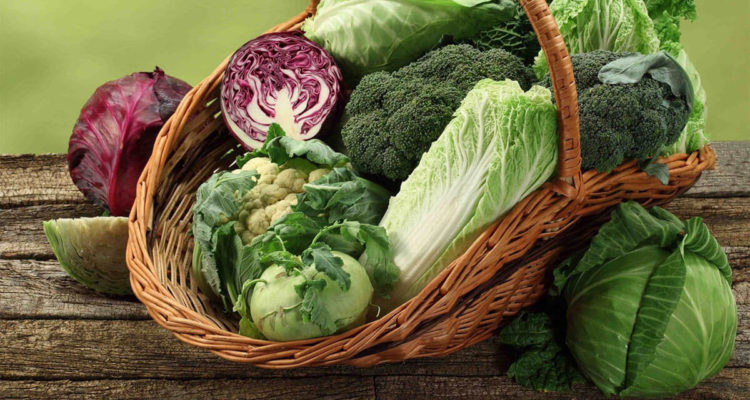
What are the benefits and harms of cabbage and why it is not recommended to eat its head
0
There are so many different types and varieties of cabbage that when you look at some, you can't even believe that they are related. In this vegetable culture, not only the leaves are edible, as many believe. However, it is better not to eat the cob, which many like to crunch as a child's habit. It also makes no sense to prefer fresh sauerkraut as more vitamin-rich. We talk about the most interesting facts about the favorite vegetable and debunk popular myths.
What is cabbage
This genus of plants of the cabbage family has more than 100 species. Stores mostly sell cabbage, which is easier to grow and store. There are also many types of kale. Among the most popular varieties of this vegetable culture:
- white cabbage;
- red cabbage;
- colorful;
- brussels;
- Savoy;
- Chinese;
- Beijing;
- Broccoli;
- Romanesco;
- Kohlrabi .
>
Common myths about cabbage: what is true and what is not
Cabbage is a root vegetable
Strictly speaking, cabbage is a vegetable crop that can be grown as a flower (ornamental types of cabbage). Kohlrabi, which many consider a root vegetable, is not. A round and thick stem is used for food, which thickens in the above-ground part and acquires a bulbous shape.
They only eat cabbage leaves
Stems with cobs are also edible (although it is not recommended to eat the latter). In addition, in a number of types of cabbage, what some consider to be cobs are inflorescences. So, for example, in broccoli, romanesco or cauliflower, they are the ones that go to food.
Cabbage has more vitamin C than fruits
Some types of cabbage really surpass many fruits in terms of ascorbic acid content. Among the record holders are broccoli (136 mg per 100 g), Brussels sprouts (120 mg per 100 g) and cauliflower (70 mg per 100 g), says nutritionist Lyudmila Denysenko. But in raw white cabbage, which has been stored for some time, vitamin C is usually not so much on average – 36 mg per 100 g. In early varieties and freshly harvested cabbage, it can be much more.
< strong>Sauerkraut and its juice contain several times more vitamin C than fresh cabbage
This is a myth repeatedly refuted by scientists. Thus, the researchers determined the content of vitamin C in 23 varieties of cabbage before and after fermentation. The content of vitamin C in fresh cabbage varied from 12 to 112.5 mg per 100 g. In sauerkraut, the level of ascorbic acid was from 5.8 to 52 mg per 100 g, and its juice – from 2.1 to 48.8 mg per 100 years. According to the researchers, the percentage of vitamin C content in sauerkraut and its juice ranges from 61.9% to 100%. That is, there is no more of this substance in cabbage during fermentation.
Red cabbage is more useful than white cabbage
To some extent, yes. Cabbage contains more different substances, and in terms of biochemical composition, it is superior to white cabbage. In particular, it contains a lot of anthocyanins – plant pigments that give it a characteristic shade and have a lot of useful properties.
It is better not to eat the cabbage head
If the cabbage was not grown in your own garden, it is better not to eat the head of cabbage, and also to remove the upper leaves from the head of cabbage. They accumulate the most nitrates.
How harmful is cabbage and who should exclude it from the diet
Coarse fiber (especially from raw cabbage) irritates the mucous membrane of the gastrointestinal tract. In addition, a large amount of fiber and polysaccharides contained in cabbage can provoke flatulence, discomfort in the stomach and intestines. There are other “contraindications”. Thus, white cabbage and red cabbage are excluded from the diet for gastric and duodenal ulcers in the stage of exacerbation and unstable remission, acute gastritis, gastroesophageal reflux disease, chronic gastritis with normal and high acidity in the non-acute stage. Doctors advise to exclude all types of cabbage from the diet in case of gout and urolithiasis with urate stones.
Sauerkraut has a larger number of contraindications for use.
- If sugar, apples and other additives are added to it, its glycemic index can increase significantly.
- Sauerkraut stimulates the appetite, so it is not recommended for those on a diet.
- Salt used for fermentation, often contributes to fluid retention in the body. An excess of salt in the diet can lead to an increase in blood pressure.
- In combination with fiber, the substances formed during the fermentation process of cabbage can cause severe gas formation.
- Due to the high content of organic acids and salt, sauerkraut, as well as juice from it, is not recommended for use with increased acidity of gastric juice, exacerbation of gastritis and gastric ulcer, hypertension, pancreatitis, gallstone disease, edema of cardiac origin, kidney failure and other diseases. , which require a salt-free diet.
Cabbage can contain nitrates, especially in summer varieties. During soaking, heat treatment, pickling, their content decreases. Nitrates also decrease during storage of the cobs. But if the conditions of long-term storage are violated, nitrites and nitrosamines, which are more dangerous for health, accumulate.
There are food and contact allergies to cabbage in some cases. Sauerkraut contains a large amount of histamine, which can lead to unwanted body reactions, warn experts from the London Center for Allergy and Immunology. They also recommend excluding cabbage (including broccoli and cauliflower) for women who are breastfeeding, due to the risk of developing colic in children.
What are the benefits of cabbage
All types Cabbage contains a lot of fiber, which improves the work of the gastrointestinal tract. Research shows that foods rich in fiber also help reduce the risk of cardiovascular diseases.
At the same time, fresh cabbage has a low glycemic index and a low calorie content – 20-40 kcal per 100 g (depending on the type). , which makes it a suitable product for those on a diet.
Also, according to a number of studies, the use of cabbage due to the bioactive substances contained in it can reduce the risk of some types of cancer. In particular, scientists have noted the connection between the use of cabbage and a reduction in the development of breast cancer in the future. In another study, it is emphasized that there are substances in cabbage that contribute to the prevention of a number of types of cancer, in particular indole-3-carbinol. Research analysis shows that this substance can have anti-estrogenic activity, regulate inflammation and cellular immunity.









Leave a Reply